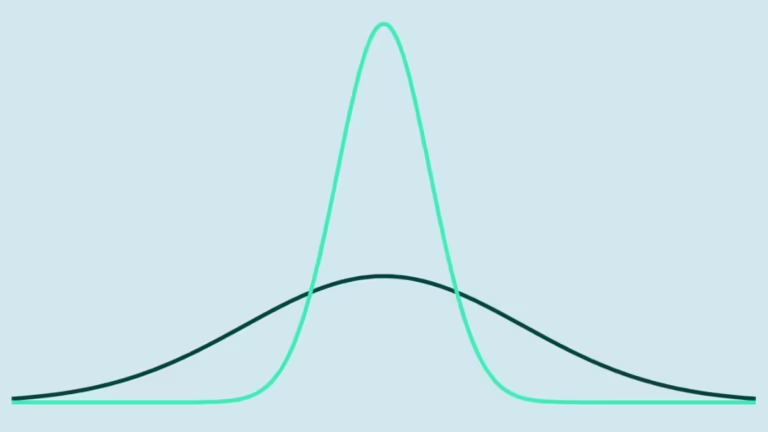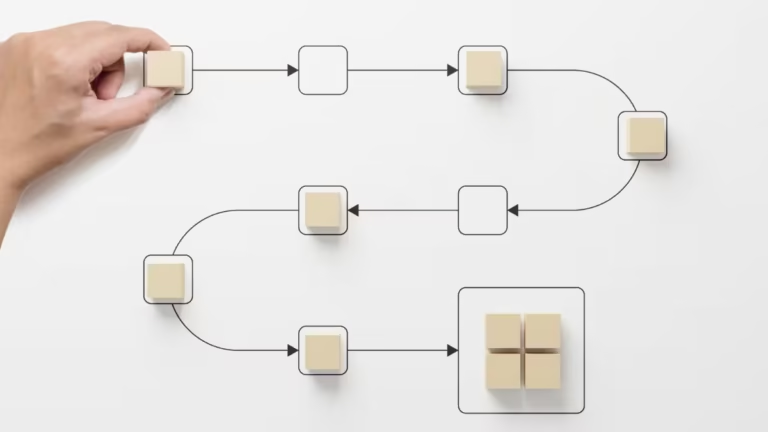The purpose of process designer jobs
Process designers create measurable business value by translating strategic intent into operational reality. Their impact shows up in multiple dimensions: cycle time reductions, quality improvements, cost savings, and enhanced customer experience.
These process optimization professionals can demonstrate their value by showing trends and comparative results for process effectiveness and efficiency metrics. These quantitative measures prove whether a redesigned process delivers on its promise.
Customer-facing process improvements demand attention to experience metrics. Tracking Net Promoter Score and related CX outcomes shows the business impact of redesigned customer-facing processes. Companies with the highest NPS scores typically grow more than twice the rate of competitors, demonstrating the revenue implications of well-designed customer processes.
Takeaway: Process designer jobs create value by architecting workflows that deliver measurable improvements in speed, quality, cost, and customer experience, with success validated through quantitative performance metrics.
What responsibilities define a process designer job?
Process design work spans discovery, analysis, design, implementation, and continuous improvement. Each phase requires specific deliverables and methodologies.
Core responsibilities include:
- Map and analyze the as-is process: Understand activities, decision points, roles, and handoffs using flowcharts to surface bottlenecks and improvement opportunities
- Elicit the voice of the customer: Define critical-to-quality requirements the redesigned process must deliver
- Design the to-be process: Create future-state value streams to eliminate waste and improve end-to-end flow from request to delivery
- Create process models: Specify sequence, responsibilities, business rules, inputs/outputs, and interactions using BPMN or swimlanes to guide implementation
- Design control activities: Address risks and compliance requirements by integrating internal control into day-to-day operations
- Collaborate with technology teams: Streamline and automate the designed workflow using BPM/RPA/orchestration where it improves speed, quality, and cost
- Leverage process mining: Discover actual as-is flows from event logs, identify bottlenecks and deviations, and validate redesign impacts
- Pilot the redesigned process: Check outcomes against targets and iterate improvements using the Plan-Do-Check-Act cycle
- Produce and maintain documented procedures: Support process operation and assign responsibilities and authorities for execution and control
- Set process performance criteria: Establish methods for monitoring and measurement (KPIs) to control and evaluate effectiveness and drive continual improvement
- Maintain document control: Ensure only current, approved process assets are used and all changes are traceable
Takeaway: Process designer responsibilities span the complete lifecycle from discovering current-state problems through designing future-state solutions to implementing controls and measurements that sustain performance improvements.
How do process design jobs fit into an org structure?
Process design capability sits in various organizational homes depending on scope, maturity, and strategic priorities. Understanding these structures helps you target the right opportunities.
Transformation Offices that orchestrate cross-functional change typically report to the CEO or COO. Process design roles are commonly embedded here to drive enterprise process redesign across multiple functions and ensure alignment with strategic objectives.
Global Business Services organizations—often responsible for enterprise process standardization and design—most commonly report to the CFO. These groups centralize transactional processes and create consistent operating models across geographies.
Automation and process Centers of Excellence can be centralized, federated, or hybrid, and may be business-led (Operations/GBS) or IT-led (CIO), depending on governance and scale. These structures govern process design standards, tooling, and capability building.
Lean/Process Offices typically act as internal coaches and facilitators rather than line managers, influencing cross-functional teams without direct line authority. They spread process design capabilities throughout the organization through training and project support.
Takeaway: Process design roles exist across transformation offices, global business services, automation CoEs, and lean offices, with reporting lines varying by organizational maturity and whether the mandate is enterprise-wide or function-specific.
Top skills needed for process designer jobs
Process designers need a distinctive mix of analytical rigor, systems thinking, and stakeholder management capabilities. Technical proficiency in methodologies and tools forms the foundation.
Essential skills include:
- Value stream mapping: Visualize the flow of materials and information across a process to identify waste and prioritize improvements—foundational for end-to-end process design
- BPMN: Standard graphical notation for specifying business processes in diagrams, enabling clear, shared understanding between business and IT during process design
- RPA: Software robots to automate repetitive, rule-based tasks; process designers scope candidates, define rules, and govern automation for speed and quality
- Low-code platforms: Forecast 20% market growth in 2023, enabling business technologists and process teams to digitize workflows faster
- Discrete-event simulation: Model systems as sequences of events to test throughput, wait times, and resource constraints—validate process options before rollout
- Change management: Projects with excellent change management are 7x more likely to meet or exceed objectives than those with poor change management—process designers must understand best practices to effectively lead adoption
Takeaway: Success in process design jobs requires mastering analytical methods like DMAIC and VSM, modeling standards like BPMN, risk tools like FMEA, and emerging capabilities in automation and change management to drive adoption.
What frameworks are essential in process design jobs?
Process designers draw from a toolkit of proven frameworks that structure analysis, design, and improvement work. Knowing when to apply each framework distinguishes strong practitioners.
Core frameworks include:
- DMAIC: Define–Measure–Analyze–Improve–Control is a structured, data-driven approach for improving existing processes by baselining performance, finding root causes, piloting fixes, and sustaining gains
- DMADV: Define–Measure–Analyze–Design–Verify guides the design of new or redesigned processes to meet customer critical-to-quality requirements from the start
- SIPOC: Supplier–Input–Process–Output–Customer diagrams clarify process boundaries, inputs, outputs, stakeholders, and requirements before detailed design
- FMEA: Proactively identifies failure modes, effects, and risk priority so control plans can be built into the process design
- PDCA Cycle: Iterative learning cycle to test, refine, and standardize new process designs before wide-scale rollout
- A3 Report: Single-page, PDCA-based method to frame the problem, analyze causes, propose countermeasures, and plan follow-up for process changes
- Hoshin Kanri: Aligns process design with strategic objectives via catchball and an X-matrix so daily management drives breakthrough goals
- ISO 9001 Process Approach: Emphasizes managing interrelated processes as a system—defining inputs, activities, outputs, and interactions—to achieve consistent outcomes
- APQC Process Classification Framework: Common taxonomy of cross-industry processes that accelerates scoping, benchmarking, and consistent process architecture design
Takeaway: Proficiency across frameworks from DMAIC and DMADV to VSM and BPMN enables process designers to select the right approach for each situation, whether improving existing processes or creating new ones from scratch.
Which tools do process designers rely on?
Process design work requires software that supports modeling, analysis, simulation, and collaboration. Proficiency in these platforms enhances your effectiveness and marketability.
Essential tools include:
- Bizagi Modeler: BPMN 2.0 process diagramming, documentation, validation, and publishing for designing and communicating process flows
- Signavio Process Manager: Cloud-based BPMN 2.0 process modeling with collaboration, governance, and publishing to document and improve business processes
- ARIS: Enterprise-wide process modeling and repository to design, analyze, and optimize business processes with governance and collaboration
- IBM Blueworks Live: Cloud-based business process mapping and discovery to document, analyze, and improve processes with collaborative modeling
- Camunda Modeler: Desktop tool to model BPMN process diagrams and DMN decision tables used to design executable workflows
- Celonis Process Mining: Data-driven process discovery and analysis to visualize flows, find bottlenecks, and identify improvement opportunities
- UiPath Process Mining: Process mining to visualize process variations, analyze performance, and prioritize automation or redesign efforts
- Pega Platform: Case management and workflow automation platform for designing, executing, and optimizing business processes
- ServiceNow Flow Designer: No-code environment to design and automate digital workflows across the enterprise
Takeaway: Process designers must develop proficiency in BPMN modeling tools like Bizagi and Signavio, process mining platforms like Celonis and UiPath, and workflow automation solutions like Pega and ServiceNow to design, validate, and implement process improvements.
Qualifications required for process design jobs
Educational requirements for process designer jobs vary by industry and role complexity, but most positions require bachelor’s degrees in relevant fields.
A bachelor’s degree is typically required for most management analyst roles, which include business process analysis and redesign. Some employers prefer candidates with a master’s degree such as an MBA, particularly for senior positions or consulting roles.
Industrial engineers, who design efficient systems and processes, typically need a bachelor’s degree in industrial engineering or a related engineering field. This technical foundation supports process design work in manufacturing, operations, and logistics contexts.
Common degree fields include industrial engineering, business administration, operations management, supply chain management, quality management, and information systems. The interdisciplinary nature of process design means diverse educational backgrounds can provide valuable perspectives.
Practical experience often matters as much as formal education. Employers value demonstrated ability to lead process improvement initiatives, work cross-functionally, and deliver measurable results. Internships, co-ops, and project-based learning provide opportunities to build this experience.
Technical skills complement formal education. Proficiency in process modeling tools, data analysis, statistical methods, and project management strengthens your qualifications regardless of degree field.
Takeaway: Process design jobs typically require bachelor’s degrees in engineering, business, or related fields, with practical experience and technical proficiency often weighing as heavily as formal education in hiring decisions.
What certifications help in process designer jobs?
Professional certifications demonstrate expertise in process design methodologies and increase your credibility with employers. Several respected credentials align directly with process designer responsibilities.
Core process certifications include:
- Certified Business Process Professional (CBPP): Recognizes demonstrated ability to lead process discovery, modeling, redesign, and governance using ABPMP’s BPM CBOK—commonly sought for core process design roles
- Certified Business Process Associate (CBPA): ABPMP’s entry-level BPM credential validates foundational competencies across process modeling, analysis, design, and improvement aligned to the BPM CBOK—well-suited for professionals starting in process design
- Certified Business Process Leader (CBPL): ABPMP’s leadership credential targets senior practitioners who drive enterprise process transformation and process management Centers of Excellence
- OCEB 2: Certifies BPM and BPMN 2.0 modeling proficiency at Foundation and Advanced levels—directly applicable to documenting and designing business processes
- Certified Business Analysis Professional (CBAP): IIBA’s CBAP recognizes senior proficiency in defining requirements, modeling processes, and recommending solutions aligned to the BABOK—highly applicable to process design
Six Sigma and quality certifications include:
- Certified Six Sigma Black Belt (CSSBB): ASQ’s CSSBB demonstrates advanced process design and improvement expertise (e.g., experimental design, advanced analytics) and leadership of cross-functional initiatives
- Lean Certification: Validates capability in lean principles and value-stream improvement, supporting end-to-end process design and waste elimination
Additional relevant certifications include:
- Project Management Professional (PMP): PMI’s PMP validates the ability to lead and deliver process design initiatives, covering predictive, agile, and hybrid approaches grounded in PMBOK-aligned practices
- ITIL 4 Foundation: Establishes a common language for designing and improving service processes via the service value system, practices, and continual improvement
- SCOR-P Endorsement: Proves ability to design, measure, and optimize supply chain processes using the SCOR framework—valuable for process design in operations and supply chain contexts
- CGEIT: Validates skill in designing and implementing governance systems and tailoring processes and components—useful for process control, compliance, and accountability
Takeaway: Professional certifications like CBPP, CSSBB, and PMP enhance career prospects by demonstrating mastery of process design methodologies, with specialized credentials like OCEB 2 and SCOR-P adding value in specific contexts.
Career growth in process designer jobs
Process design offers diverse career paths with opportunities to specialize by industry, deepen methodology expertise, or progress into leadership roles. Typical progression includes:
- Process Analyst/Coordinator
- Process Designer/Consultant
- Senior Process Designer
- Process Design Manager/Lead
- Director of Process Excellence
- VP of Operational Excellence/Transformation
Entry points vary. Business analysis enables change by defining needs and recommending solutions—including improvements to business processes—so BA roles are a frequent feeder into process design.
Industrial engineers design and improve integrated systems for products and services—an education and early role that commonly leads into process design work in organizations.
Lean Six Sigma (Green/Black Belt) is a widely used methodology across industries for process improvement and quality, and is a common credential for process design professionals transitioning from quality, operations, or engineering roles.
Role titles vary by organization. Common alternate titles include Process Engineer, Manufacturing Engineer, and Quality Engineer. Business-focused roles may use titles like Business Process Analyst, Process Improvement Manager, and Continuous Improvement Manager.
Specialization opportunities exist across industries (healthcare, financial services, manufacturing), methodologies (Lean, Six Sigma, BPM), and technologies (automation, process mining, digital transformation). Some practitioners build consulting careers that expose them to diverse challenges across sectors.
Takeaway: Process design careers welcome entry from business analysis, industrial engineering, and quality roles, with progression spanning from analyst positions through senior practitioner roles to executive-level transformation leadership.
Which associations benefit process designers?
Professional associations provide networking, continuing education, and credibility that accelerate career development in process design.
Primary process-focused associations include:
- Association of Business Process Management Professionals (ABPMP): Professional association dedicated to business process management, directly aligned to roles focused on process analysis, modeling, and design
- American Productivity & Quality Center (APQC): Nonprofit focused on benchmarking, best practices, and process management, known for the Process Classification Framework used in process design
- Lean Enterprise Institute: Nonprofit focused on Lean principles and value-stream-based process design to eliminate waste and improve flow
Quality and improvement associations include:
- American Society for Quality (ASQ): Global community of quality professionals advancing process improvement, operational excellence, and performance standards
- International Society of Six Sigma Professionals (ISSSP): Professional society advancing Lean Six Sigma methods central to process design, optimization, and defect reduction
- Institute of Industrial & Systems Engineers (IISE): Professional society focused on designing and improving systems and processes across industries, emphasizing efficiency and performance
Related professional organizations include:
- International Institute of Business Analysis (IIBA): Global professional association for business analysis, covering requirements, process modeling, and process design practices
- Business Architecture Guild: Professional association advancing business architecture practices that connect capabilities, value streams, and process design
- Project Management Institute (PMI): Global association setting project management standards and practices that integrate process governance and continuous improvement
Takeaway: Active participation in associations like ABPMP, ASQ, and LEI provides essential networking, certification pathways, and professional development opportunities that distinguish process design professionals and advance careers.
What events could advance a process design career?
Professional conferences provide learning, networking, and exposure to emerging practices that accelerate process design careers.
Premier process-focused events include:
- Business Transformation & Operational Excellence Summit (BTOES): Large cross-industry summit on end-to-end transformation, process design, continuous improvement, and operational excellence
- Process Excellence Network Business Transformation World Summit: Flagship Process Excellence Network event focused on operational excellence, process design, and business transformation for enterprise leaders
- BPM Conference: Academic–industry conference on BPM, process modeling, design, automation, and improvement
Technology-specific events include:
- Celosphere: Celonis’ global conference centered on process mining and process intelligence to accelerate process design and improvement
- PegaWorld: Pegasystems’ flagship event on digital process automation, case management, and AI-driven workflows for enterprise process design
- Appian World: Low-code automation conference with deep focus on process modeling, design, and orchestration using BPM practices
- CamundaCon: Practitioner conference on workflow orchestration and BPMN, showcasing process design and automation architectures
- ICPM: Leading research and industry event on process mining for process discovery, conformance, and enhancement—key inputs to process design
Quality and operational excellence events include:
- ASQ World Conference on Quality and Improvement (WCQI): ASQ’s premier conference covering quality, Lean Six Sigma, and process improvement methodologies central to process design
- Shingo Conference: Operational excellence conference grounded in the Shingo Model, with strong emphasis on process design and sustainable improvement
- IISE Annual Conference: Industrial and systems engineering conference featuring process design, systems optimization, and continuous improvement tracks
Takeaway: Regular attendance at conferences like BTOES, PegaWorld, and WCQI provides essential professional development, networking opportunities, and exposure to emerging process design practices, technologies, and methodologies.
Process designer salary trends and outlook
Compensation for process design roles reflects the strategic value these professionals deliver, with salaries varying by experience level, industry, and geographic location.
Typical compensation ranges include:
- Process Design Engineer: Total pay range of $104K – $156K/yr, with a median total pay of $127K/yr
- Process Design Consultant: Total pay range of $106K – $179K/yr, with a median total pay of $137K/yr
- Business Process Design Lead: Total pay range of $124K – $195K/yr, with a median total pay of $154K/yr
- Process Design Manager: Total pay range of $131K – $206K/yr, with a median total pay of $163K/yr
Total compensation typically includes base salary plus bonus, profit sharing, or other variable pay. Geographic location significantly impacts compensation, with major metropolitan areas and high cost-of-living regions offering premium salaries.
Industry affects pay as well. Technology, financial services, and consulting typically provide higher compensation than manufacturing, healthcare, or government sectors. Company size matters too, with enterprise organizations generally offering more competitive packages than mid-market firms.
Certifications and specialized expertise command salary premiums. Professionals with advanced credentials like CSSBB or CBPP, or deep expertise in emerging areas like process mining and automation, typically earn toward the higher end of ranges.
Takeaway: Process designer salaries range from mid-$120Ks for entry-level roles to $200K+ for senior management positions, with total compensation reflecting experience, certifications, industry, and geographic location.
Final thoughts
Process designer jobs offer rewarding careers at the intersection of analytical rigor, technology enablement, and organizational change. As businesses face mounting pressure to adapt, optimize, and transform, skilled process designers who can architect efficient workflows and drive adoption will remain in high demand. Whether you’re entering the field or advancing your process design career, the combination of structured methodologies, emerging technologies, and measurable business impact makes this a profession that delivers both personal growth and tangible organizational value.








